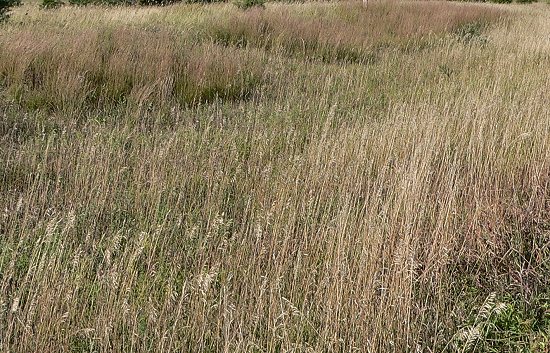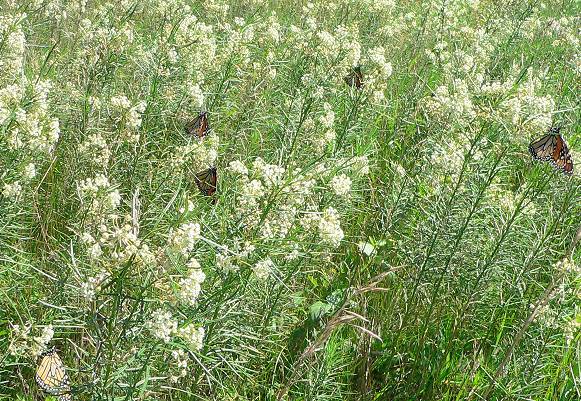I collect as many of the seeds as I can. Prairie seeds are very expensive, so I can afford to plant more if I collect a lot of them myself.
I like to get as many seeds as I can from close by. One of the issues to consider in prairie plantings is how far away the seeds come from. Planting prairie seeds from Texas or Oklahoma in Minnesota, even the right species, often doesn’t work because the plants are different genotypes – they’ve evolved to survive different weather conditions. So it’s best to try to get seeds from as close to where they will be planted as possible.
I look for seeds in the ditches along roadsides, and in prairie remnants. This is a typical roadside ditch – it doesn’t look like there would be many interesting plants there, but if I look closely I can often find natives growing among the weeds.

It’s easier to spot blooming flowers than seeds, so I keep track of where I’ve seen blossoms, and then go back to check on them 3 or 4 weeks later. This is a patch of Whorled Milkweed that I discovered blooming on the side of a ditch and full of migrating Monarch Butterflies. A month later I went back and there were hundreds of ripe seed pods.

Often the remnants have survived because they’re either too wet or too sandy to plant, and the farmers are happy to let me collect seeds there. Here’s a view of a farmer’s cow pasture where I collect wetland seeds. It looks like a trampled, degraded pasture, but it has a huge variety of wetland species and most of them are native.

Seeds that I can’t collect I buy from local nurseries that specialize in native seeds. My favorite is Prairie Moon Nursery in Winona, Minnesota – it has an amazing variety of seeds available.
